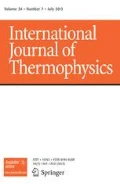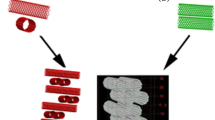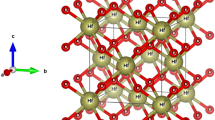Abstract
Based on the Bruggeman integral principle and Ordonez-Miranda et al. (J. Appl. Phys. 111, 044319 (2012)) model, formulas for predicting the effective thermal conductivity of composites containing not only low but also high concentrations of spherical and cylindrical metallic particles embedded in a dielectric matrix are derived and analyzed. In the dilute limit of particles, the obtained results coincide with those previously reported in the literature. In the non-dilute limit, on the other hand, the thermal conductivity of the composites shows a remarkable enhancement, which increases with the relative radius of the particles with respect to the coupling length. It is shown that the effect of electron–phonon coupling on the thermal conductivity of composites gets strength at high-volume fractions of particles and is cancelled out for high interfacial thermal resistances. The proposed model could be useful for predicting the thermal conductivity of particulate composites with metallic particles with sizes from macro/micro- to nanoscales.
Similar content being viewed by others
References
Milton G.W.: The Theory of Composites. Cambridge University Press, Cambridge (2002)
Minnich A., Chen G.: Appl. Phys. Lett. 91, 073105 (2007)
Torquato S.: Random Heterogeneous Materials. Springer, New York (2001)
Nan C.W., Birringer R., Clarke D.R., Gleiter H.: J. Appl. Phys. 81, 6692 (1997)
Nan C.W.: J. Appl. Phys. 76, 1155 (1994)
Kittel C.: Introduction to Solid State Physics, 8th edn. Wiley, Hoboken, NJ (2005)
Ordonez-Miranda J., Yang R.G., Alvarado-Gil J.J.: Appl. Phys. Lett. 98, 233111 (2011)
Ordonez-Miranda J., Yang R., Alvarado-Gil J.J.: J. Appl. Phys. 111, 044319 (2012)
Bruggeman D.A.G.: Ann. Phys. 24, 636 (1935)
Ordonez-Miranda J., Alvarado-Gil J.J., Medina-Ezquivel R.: Int. J. Thermophys. 31, 975 (2010)
Yonezawa F., Cohen M.H.: J. Appl. Phys. 54, 2895 (1983)
Majumdar A., Reddy P.: Appl. Phys. Lett. 84, 4768 (2004)
Qiu T.Q., Tien C.L.: J. Heat Transf. Trans. ASME 115, 835 (1993)
Yang R.G., Chen G.: Phys. Rev. B 69, 10 (2004)
Yang R.G., Chen G., Dresselhaus S.M.: Phys. Rev. B 72, 125418 (2005)
Author information
Authors and Affiliations
Corresponding author
Rights and permissions
About this article
Cite this article
Ordonez-Miranda, J., Alvarado-Gil, J.J. & Yang, R. Effective Thermal Conductivity of Metal–Dielectric Composites at the Non-dilute Limit. Int J Thermophys 33, 2118–2124 (2012). https://doi.org/10.1007/s10765-012-1235-8
Received:
Accepted:
Published:
Issue Date:
DOI: https://doi.org/10.1007/s10765-012-1235-8




